International Journal of Agricultural Science and Food Technology
Assessment of soil quality in irrigated arid lands under organic agriculture systems
AKhedr Safaa1, AS Sheta2*, A El-Beltagy1 and MS Abd-Elwahed2
2Soil and water Science Department, Faculty of Agriculture, Ain Shams Univercity, Shoubra El-Kheima, Cairo, Egypt
Cite this as
Safaa K, Sheta AS, El-Beltagy A, Abd-Elwahed MS (2024) Assessment of soil quality in irrigated arid lands under organic agriculture systems. Int J Agric Sc Food Technol 10(1): 032-040. DOI: 10.17352/2455-815X.000204Copyright License
© 2024 Safaa K, et al. This is an open-access article distributed under the terms of the Creative Commons Attribution License, which permits unrestricted use, distribution, and reproduction in any medium, provided the original author and source are credited.The process of evaluating the soil quality is complex and is impacted by a variety of physical, chemical, and biological indicators as well as how they interact over time, particularly throughout different cultivation periods. The main objective of the current investigation is to examine how various organic farming practices affect the soil quality indicators at selected organic farms throughout various cultivation times. The study sites in Egypt were selected to represent two great soil groups (Torripsamments and Haplotorrerts). Moreover, the selected farms have different organic cultivation periods and management practices. Soil samples were collected from five different farms and uncultivated soil in each soil great soil group as control. After analyzing soil samples in the lab, physical, chemical, and biological indicators were assessed and used to calculate the Soil Quality Index (SOI). Principal Component Analysis (PCA) was used to obtain the minimum data set needed for soil quality evaluation. The length of organic cultivation in Torripasament raised the SQI value for physical and chemical indicators in the following order: 2 years > 6 years > 10 years > 13 years. Similar to Torripsament, the most sensitive indicators for SQI assessment in Haplotorrert were found to be soil respiration, microbial biomass C, microbial quotient, organic matter, and physical characteristics of soil quality. Results also indicated that organic farming improves most of the studied soil quality indicators of both soils (Torripsamment and Haplotorrerts). Soil respiration, Microbial Biomass (MBC), Microbial Quotient (MQ), organic matter, and physical aspects of soil quality were the most sensitive indicators of soil quality evaluation. Soil quality index (SQI) for Torripsamment was affected mostly by soil biological indicators, while soil physical indicators were the main indicators affecting SQI in Haplotorrerts. The best score for the soil quality index was at 13 years of organic cultivation periods in Torripsamment and at 17 years in Haplotorrerts.
Abbreviations
AGG: Aggregation State; CEC: Cation Exchange Capacity; DTPA: Diethylene Triamine Pentaacetic Acid; ECe: Electrical Conductivity in Extract; ESP: Exchangeable Sodium Percent; MDS: Minimum Data Set; Mg/m3: Mega gram/ cubic meters; PCA: Principal Component Analysis; SQI: Soil Quality Index; SOC: Soil Organic Carbon; Sf: Structure Factor; TDS: Total Data Set
Introduction
Arid and semi-arid regions face exclusive challenges in agriculture due to limited water availability and severe environmental conditions. Organic farming has been proposed as a sustainable farming system that can improve soil quality and productivity in these challenging environments. Understanding the impact of organic agriculture practices on soil quality in irrigated arid lands is crucial for sustainable land management and food production in these regions. Moreover, the soil in such regions is often characterized by low organic matter content, high salinity, and poor fertility, making it difficult to support agricultural activities. Traditional farming practices such as excessive tillage and chemical inputs can further degrade soil quality in these areas. Organic agriculture, which emphasizes building good soil quality through practices such as crop rotations cover cropping, and composting, has the potential to improve soil quality and productivity in arid lands.
Generally, the main objectives of the current study are; to assess the impact of organic agriculture practices on soil physical, chemical, and biological properties, to evaluate the effects of organic farming on soil microbial communities and their role in nutrient cycling and soil health, to compare soil quality indicators between organic and control soil in irrigated arid lands and to identify key factors influencing soil quality in organic agriculture systems in arid environments.
Several studies have explored this topic, highlighting the potential benefits of organic practices for arid soils [1] in Indonesia demonstrated an improvement in Soil Organic Carbon (SOC) content in organically managed paddy fields compared to conventionally managed fields. Similarly, a study by [2] suggested that organic amendments can enhance soil quality in arid lands, but advised that tillage practices can accelerate organic matter decomposition. These findings are echoed by others, emphasizing the importance of understanding the complex interplay between organic inputs, irrigation practices, and overall soil management strategies [3-6] defined soil quality as the capacity of soil to function within an ecosystem and land-use boundaries, sustain biological activity, maintain environmental quality, and promote plant, animal, and human health. According to [7-9], soil quality indices are considered the most common methods for soil quality evaluation due to ease of use, flexibility, and quantification. Furthermore, assessing soil quality goes beyond just chemical properties [10] emphasized the importance of considering microbial properties as well. By employing a set of physical, chemical, and biological indicators, researchers can gain a more comprehensive understanding of how organic agriculture influences soil quality in arid irrigated systems [11]. This knowledge is crucial for optimizing organic management practices and ensuring the long-term sustainability of agriculture in arid environments.
These indices represent the cumulative effects of different soil properties (physical, chemical, and biological) as an index of the role of each indicator in soil quality. In organic farming systems, plant production mainly depends on nutrient transformation in soil because only a limited amount of fertilizer is used. According to [12] organic agriculture is a production system that sustains the health of soils, ecosystems, and people. Soil quality indicators may be identified qualitatively (e.g. drainage is fast) or quantitatively (i.e. infiltration = 2.5 in/hr). Many investigators discuss this issue [13] reported that an important feature of soil quality is the differentiation between inherent and dynamic soil properties [14,15] used the Principal Component Analysis (PCA) for selecting MDS from a total of twenty-two soil properties. According to [16], the Soil Quality Index (SQI) is a widely used approach that combines many criteria, or indicators, into a single number that represents the function of the soil. It offers integrated data on how farming techniques, such as irrigation, affect the temporal and geographical performance of the soil. Also, [17] selected an MDS from nineteen physical, chemical, and biological soil properties as the TDS under different planting patterns and soil types. They concluded that the selected MDS had good efficiency in representing TDS. Therefore, the main objectives of this work were: 1) Determining the Minimum Data Set (MDS) for evaluating soil quality of organic farming systems using multivariate analysis, 2) Evaluating the importance of cultivation periods on the improvement of soil quality 3) Developing scoring function for soil quality assessment of some organic farming systems in Egypt.
Materials and methods
Two study sites were selected to represent two great soil groups dominated in arid lands (i.e., Torripsamments and Haplotorrerts). Irrigated farms with varying cultivation times and management practices served as the study sites. Four farms were selected in the Nubaria area, west of the Delta region, Egypt (Figure 1) as Torripsamments soils. The four farms represented different organic farming periods of 2, 6, 10, and 13 years, with the uncultivated soil serving as the control. The selected farms were located at 20 m asl elevation with an arid climate (precipitation 94 mm/year, temperature range 14.3-28.1 oC). Three farms with different organic farming periods of 5, 10, and 17 years plus uncultivated soil were selected in Fayum governorate, Egypt to represent Haplotorrerts soil (clay-textured soils) (Figure 1). The selected farms were located at 28.30 m asl elevation with an arid climate (precipitation about 13.7 mm, temperature range 14.5-29.5 oC). A brief description of the farming practices, source of irrigation water; irrigation system, pest control management, and cropping patterns at the study sites were given in Table 1. Representative soil profiles were selected and morphologically described in the field, and then forty-two soil samples were collected according to the morphological variations in the studied profiles in the year 2022. The collected samples were prepared for physical, chemical, and microbiological analyses following standard procedures according to [18,19]. The structure factor (sf) was calculated after [20]. DTPA was used to extract available micronutrients [21]. Fe, Mn, Cu, and Zn were measured using Atomic Absorption Spectrometry (AAS) according to [22,23]. Available phosphorus was extracted by NaHCO3 and determined using ascorbic acid [24]. Available K was extracted and measured using a flame photometer [25].
Representative subsamples from each layer were prepared and analyzed for biological properties using the standard methods described by [26,27]. The obtained data were statistically analyzed and Soil Quality Index (SQI) was obtained according to [28] as follows: a) Selection of a Minimum Data Set (MDS) of indicators that best represent soil function. b) Scoring the MDS indicators based on the performance of soil functions, and c) Integrating the indicator scores into a comparative index of soil quality. The selected indicators were converted to score values (between 0 and 1) using non-linear scoring functions. The scored values were integrated into indices using an additive model (Eq. 1), and the indices were subjected to ANOVA to test the significance of the treatment effects.
Where: SQI = soil quality index, Si = score values for individual indicators, and, n = number of Indicators used.
Results and discussion
The study investigated the effects of organic farming on soil quality in two soil types: Torripsaments and Haplotorrerts.
Physical soil quality indicators
Results in Table 2 show the effects of long-term cultivation on various soil properties. The results show that the soil properties vary depending on the farming period and the depth of the soil sample. The highest bulk density values were found in the uncultivated soils. The percentage of sand is generally higher in the upper layers of the soil than in the lower layers. Also, as soil depth increases, some characteristics of the soil, such as bulk density and total porosity, tend to decrease and increase, respectively.
In Torripsamments soils, organic cultivation practices resulted in higher fine sand, silt, and clay content compared to uncultivated soils (Table 2). This variation is likely due to natural soil formation processes rather than specific management practices. Organic farms had better soil aggregation than uncultivated areas, with aggregation improving with depth. This trend is reflected in the soil structure factor data. Similar findings were reported by [29], who linked organic amendments to significant improvements in soil structural stability.
Table 2 also shows a decrease in soil bulk density with increasing cultivation periods. For example, surface layers of soils cultivated for 2, 6, 10, and 13 years had bulk densities of 1.53, 1.47, 1.50, and 1.48 Mg/m3, respectively. Total porosity followed the opposite trend.
For Haplotorrerts soils, Clay content was higher in organically farmed soils compared to uncultivated soils (Table 3). The highest clay percentage was found in profiles No. 9 and 13. Overall, soil texture was not significantly affected by organic farming practices as changes in clay, silt, and sand fractions are primarily caused by natural processes or human activities like adding materials to the soil. All organic cultivation profiles displayed lower bulk density, aggregation state, and structure factor compared to uncultivated soils. These variations are likely due to interactions between clay particles and organic matter, potentially forming frothed clay-organic complexes [30,31] suggested positive feedback cycles between Soil Organic Carbon (SOC) accumulation in macro-aggregates and enhanced aggregate stability. Based on this data, organic cultivation appears to improve soil physical properties, potentially leading to positive effects on other soil characteristics and overall soil behavior.
Chemical soil quality indicators
Results in Tables 4,5 show that the pH of the soil varied depending on the farming period, depth, and whether the soil was cultivated. In general, the pH was lower (around 7.6) in the top layer (0 cm - 30 cm) of cultivated soils and increased with depth. The ECe and ESP values were generally low throughout the table. The availability of phosphorus (P) and potassium (K) was higher in the top layer (0 cm - 30 cm) of cultivated soils compared to uncultivated soils. This suggests that cultivation organic farming practices may increase the availability of these nutrients in the short term.
The organic matter (OM) content was generally higher in the top layer (0 cm - 30 cm) of cultivated soils compared to uncultivated soils]. Uncultivated Torripsaments had relatively lower soil pH and Electrical Conductivity (ECe) compared to cultivated ones. Organic farming practices in Torripsaments led to higher Cation Exchange Capacity (CEC) and levels of available nitrogen (N), phosphorus (P), potassium (K), and soil organic matter (SOM) compared to uncultivated soils. The highest levels of these elements were observed after 13 years of organic cultivation. Haplotorrerts under organic farming generally had lower soil pH and higher ECe values compared to uncultivated soils. Organic management also increased CEC, exchangeable calcium (Ca++), magnesium (Mg++), and sodium (Na+) in Haplotorrerts compared to uncultivated soils.
All studied Haplotorrerts soils had very high available K content, with organically farmed soils having even higher values. This high K level was likely linked to the parent material and management practices. Total nitrogen, organic carbon (OC), and SOM contents were greater in cultivated Haplotorrerts compared to uncultivated ones. The highest levels were observed after 17 years of cultivation.
Biological soil quality indicators
Figures 2,3 show that organic farming practices enhanced basal respiration and Soil Microbial Biomass Carbon (SMBC) in Torripasaments compared to uncultivated soils. This effect was most evident after 10 and 13 years of organic cultivation. The surface layer had a higher concentration of microbial biomass C compared to deeper layers.
The microbial quotient in Torripsaments decreased under organic farming practices across all years and crops studied. The surface layer had a lower microbial quotient compared to deeper layers, possibly due to increased OC or decreased SMBC in the surface layer [32,33].
The highest soil respiration rate in Haplotorrerts was observed in organically farmed soil cultivated for 17 years. The rate increased with cultivation time, following the order: 5 years < 10 years < 17 years. Soil microbial biomass C content followed a similar trend.
The microbial quotient in Haplotorrerts (Figure 4) displayed a different trend compared to Torripsaments. The surface layer was relatively lower than the deep layers which may be related to increased OC or decreased SMBC in the surface layer. Figure 5 Show that the highest Haplotorrerts soil respiration rate was found in the organic farming soil that was cultivated for 17 years (Figure 6).
The microbial quotient ratio displayed a quite different trend to that obtained for Torripsamments soil (Figure 7).
Soil Quality Index (SQI)
Principal component analysis (PCA) identified soil respiration, microbial biomass C, microbial quotient, total porosity, bulk density, percentage silt + clay, organic matter (OM), SOC, CEC, total nitrogen, available nitrate (NO3), and available iron (Fe), manganese (Mn), zinc (Zn), and copper (Cu) as the most important factors influencing SQI in Torripsaments under organic farming. The SQI for physical and chemical properties in Torripsaments increased with the duration of organic cultivation, following the order: 2 years > 6 years > 10 years > 13 years. The biological SQI showed a different trend: 2 years > 13 years > 6 years > 10 years (Tables 6,7).
This suggests that soil respiration, microbial biomass C, microbial quotient, organic matter, and physical aspects of soil quality were the most sensitive indicators of the impact of organic farming practices on Torripsaments. In Haplotorrerts, soil aggregate state, bulk density, percentage silt + clay, structure factor, and some chemical indicators like ESP, SAR, available ammonium (NH4), available Cu, soil pH, and ECe were the most influential factors on SQI. Soil respiration, microbial biomass C, microbial quotient, CEC, CaCO3, and available Fe were important factors determined by the second component.
Tables 8,9 show that Haplotorrerts followed a trend similar to Torripsaments, soil respiration, microbial biomass C, microbial quotient, organic matter, and physical aspects of soil quality were identified as the most sensitive indicators for SQI evaluation.
The SQI score in Torripsaments relied mainly on biological indicators, while the score in Haplotorrerts depended more on physical indicators. The highest SQI values were observed in Torripasaments managed organically for 13 years and Haplotorrerts managed organically for 17 years, compared to their respective uncultivated counterparts.
Overall, the study demonstrates that organic farming practices can significantly improve soil quality in both Torripasaments and Haplotorrerts. The most significant improvements were observed in soil biological properties and organic matter content. The SQI served as a useful tool for evaluating the overall impact of organic farming on soil health.
This study investigated the effects of organic farming practices on soil quality in Torripsaments and Haplotorrerts. The results revealed significant improvements in various soil properties under organic management compared to uncultivated soils.
Organic farming practices led to a significant enhancement of soil fertility in both soil types. Compared to uncultivated soils, organically farmed Torripsaments exhibited higher CEC, available N, P, K, and SOM [27,34,35]. This aligns with previous research by [15] who reported increased soil fertility due to organic amendments. Similarly, organic management in Haplotorrerts resulted in elevated CEC, exchangeable cations (Ca, Mg, Na), and available K content [27]. The high K levels observed in Haplotorrerts could be attributed to the parent material and organic practices, as suggested by the authors. Furthermore, organic cultivation led to increased total N, OC, and SOM in Haplotorrerts compared to uncultivated counterparts, with the highest levels observed after 17 years [27]. This is consistent with research by [31,36], which showed that soil organic matter formation is aided by organic fertilizer.
Moreover, compared to uncultivated soils, organically farmed Torripsaments displayed increased basal respiration and SMBC, with the most pronounced effect observed after 10 and 13 years of cultivation, which suggests that organic management fosters a more active soil microbial community, supporting findings by [10] who reported enhanced microbial diversity under organic fertilization.
In Haplotorrerts, the highest soil respiration rate and SMBC content were observed after 17 years of organic cultivation which indicates a gradual improvement in soil biological activity with increasing duration of organic management. The microbial quotient in Haplotorrerts displayed a contrasting trend compared to Torripsaments, with the surface layer having lower values. This difference might be related to variations in organic matter distribution or microbial community structure within the soil profile [37].
Soil Quality Index (SQI)
In Torripsaments, soil respiration, microbial biomass C, microbial quotient, organic matter, and physical properties (total porosity, bulk density, % silt + clay) were the most prominent factors affecting SQI. The SQI for both physical and chemical properties increased with the duration of organic cultivation, except for biological indicators which showed a distinct pattern. This implies that under organic management, improvements to the biological quality of the soil may come about more slowly than improvements to its physical and chemical qualities [38,39].
In Haplotorrerts similar to Torripsaments, soil respiration, microbial biomass C, microbial quotient, and organic matter content emerged as the most sensitive indicators for SQI. However, unlike Torripsaments, the SQI score relied more on physical indicators.
The highest SQI values were observed in Torripsaments managed organically for 13 years and Haplotorrerts managed organically for 17 years. This signifies that the positive effects of organic farming on soil quality become more pronounced with longer adoption periods. Overall, the study demonstrates that organic farming practices significantly improve soil quality in both Torripsaments and Haplotorrerts. The most notable improvements were observed in soil biological properties, organic matter content, and SQI scores. These findings highlight the potential of organic farming to enhance soil health and promote sustainable agricultural practices.
The study did not investigate the specific organic farming practices employed (e.g., compost application, cover cropping) and their potential influence on the observed effects.
Conclusion
Organic farming practices significantly improved soil quality in both Torripsaments and Haplotorrerts, with the most pronounced effects observed after longer cultivation periods.
Key findings
- Improved soil fertility: Organic management increased CEC, available N, P, K, and SOM in both soil types compared to uncultivated controls.
- Enhanced soil biology: Organic practices led to increased basal respiration, and soil microbial biomass C, indicating a more active microbial community.
- Soil quality index (SQI): SQI served as a useful tool to evaluate overall soil health. SQI scores increased with organic cultivation duration in Torripasaments (physical & chemical) and Haplotorrerts (physical).
It could be concluded that soil quality indexing is a crucial tool to assess both soils and agricultural practices. It provides a comprehensive picture of a soil’s health beyond just nutrient levels. This index considers factors like organic matter content, water infiltration, and microbial activity, giving a more complete understanding of a soil’s ability to support plant growth. Organic farming practices, which emphasize composting, cover crops, and reduced tillage, can significantly enhance this soil quality. By promoting a thriving ecosystem of microbes and fungi, organic farming helps retain moisture, improve drainage, and create a fertile environment for plants to flourish.
The study highlights the potential of organic farming for sustainable agriculture but does not explore specific practices and their influence. Future research could investigate these aspects to provide more targeted recommendations for optimizing organic farming strategies.
- Haryuni H, Wirawati H, Minardi S, Supriyadi S. Assessment of soil quality in organic and non-organic paddy fields with technical irrigation system in Susukan. Pol J Soil Sci. 2020; 53(1):81.
- Ikemura Y, Shukla MK. Soil quality in organic and conventional farms of New Mexico, USA. J Sustain Agric. 2009; 33(1):34-47.
- Ali MA, Kamraju M. Land Use and Agriculture. In: Natural Resources and Society: Understanding the Complex Relationship between Humans and the Environment. Cham: Springer Nature Switzerland. 2023; 115-127.
- Campdelacreu Rocabruna P, Domene X, Preece C, Peñuelas J. Relationship among Soil Biophysicochemical Properties, Agricultural Practices and Climate Factors Influencing Soil Phosphatase Activity in Agricultural Land. Agriculture. 2024; 14(2):288.
- Doran JW, Parkin BT. Defining and assessing soil quality. In: Doran JW, Coleman DC, Bezdicek DF, Stewart BA (eds). Defining Soil Quality for a Sustainable Environment. Soil Science Society of America, Inc.; 1994; 3-21.
- Durán GA, Sacristán D, Farrús E, Vadell J. Towards defining soil quality of Mediterranean calcareous agricultural soils: reference values and potential core indicator set. Int Soil Water Conserv Res. 2024; 12(1):145-55.
- Drury CF, Zhang TQ, Kay BD. The non-limiting and least limiting water range for soil nitrogen mineralization. Soil Sci Soc Am J. 2003; 67(5):1388-404.
- Singh MJ, Khera KL. Physical indicators of soil quality in relation to soil erodibility under different land uses. Arid Land Research and Management. 2009; 23(2): 152-167.
- Abd-Elwahed MS. Influence of long-term wastewater irrigation on soil quality and its spatial distribution. Ann Agric Sci. 2018; 63(2):191-199.
- Zhang X, Li J, Shao L, Qin F, Yang J, Gu H, Zhai P, Pan X. Effects of organic fertilizers on yield, soil physico-chemical property, soil microbial community diversity and structure of Brassica rapa var. Chinensis. Front Microbiol. 2023 May 31;14:1132853. doi: 10.3389/fmicb.2023.1132853. PMID: 37323918; PMCID: PMC10266463.
- Omer M, Idowu OJ, Pietrasiak N, VanLeeuwen D, Ulery AL, Dominguez AJ, et al. Agricultural practices influence biological soil quality indicators in an irrigated semiarid agro-ecosystem. Pedobiologia. 2023; 96:150862.
- International Federation of Organic Agriculture (IFOAM). Definition of Organic Agriculture. org/ growing_ organic/definitions /doa/index.html.
- Carter MR, Andrews SS, Drinkwater LE. Systems approaches for improving soil quality. In: Schjonning P, Elmholt S, Christensen BT (eds). Managing Soil Quality: Challenges in Modern Agriculture. CABI International; 2004; 261-81.
- Qi Y, Jeremy LD, Huang B, Zhao Y, Sun W, Gu Z. Evaluating soil quality indices in an agricultural region of Jiangsu Province, China. Geoderma. 2009; 149(3-4): 325-334.
- Lalitha M, Kalaiselvi B, Dharumarajan S, Kumar KS, Kumar SC, Srinivasan R. Determining soil quality indicators for alluvial plains in the semi-arid tropics. Soil Use Manage. 2024; e12929.
- Bhaduri D, Purakayastha TJ, Pramanik P, Saha A, Verma BC, Shahid M, Saha D. Indexing methods of soil quality in agro-ecosystems: An overview of Indian soils and beyond. In: Rakshit A, Ghosh S, Chakraborty S, Philip V, Datta A, editors. Soil Analysis: Recent Trends and Applications. Singapore: Springer Singapore; 2020; 255-84.
- Bi CJ, Chen ZL, Wang J, Zhou D. Quantitative assessment of soil health under different planting patterns and soil types. Pedosphere. 2013; 23(2):194-204.
- Page AL, Miller RH, Keeney DR. Methods of soil analysis. Part 2, 2ed. Agron. 1982.
- Rhoades JD. Cation exchange capacity. In: Page AL, Miller RH, Keeney DR, editors. Methods of soil analysis: chemical and microbiological properties. 2nd ed. Madison, WI: American Society of Agronomy. 1982; 167-9.
- El-Sarangawy NM. Effect of soluble and exchangeable cation on the soil structure factor in El-Minia soils. Ann Agric Sci Ain Shams Univ. 1986; 31(2):1703-16.
- Johnson GV. Determination of zinc, manganese, copper, and iron by DTPA extraction. In: Donohue SJ (ed). Reference Soil and Media Diagnostic Procedures for the Southern Region of the United States. Southern Cooperative Series Bulletin Number 374. Virginia Agricultural Experiment Station, Blacksburg; 1992; 16-18.
- Ure AM. Atomic absorption and flame emission spectrometry. In: Smith KA, editor. Soil analysis: modern instrumental techniques. 2nd ed. New York: Marcel Dekker; 1991; 1-62.
- Aydinoglu S. Iron and zinc determination in dietary supplements by flame atomic absorption spectrophotometry. Braz J Pharm Sci. [Internet]. 2023 [cited 2024 Mar 20]; 58:e21094. doi: 10.1590/s2175-97902022e21094
- Anderson JPE, Domsch KH. A physiological method for the quantitative measurement of microbial biomass in soils. Soil Biol Biochem. 1978; 10(3):215-21.
- Anonymous. Extractable phosphorus: sodium bicarbonate method (Olsen). In: Gavlak RG, Horneck DA, Miller RO, editors. Plant, Soils, and Water. Reference Methods for the Western Region. Western Regional Extension Publication WREP 125. Fairbanks: University of Alaska; 1994; 21-22.
- Affinnih K. Assessment of extractants for soil available potassium determination in the selected soils of Kwara State, Nigeria. Agricultural Sciences/Agrarni Nauki. 2023; 15(36).
- Anderson JPE, Domsch KH. A physiological method for the quantitative measurement of microbial biomass in soils. Soil Biol Biochem. 1978; 10(3):215-21.
- Saharan BS, Tyagi S, Kumar R, Vijay, Om H, Mandal BS, Duhan JS. Application of jeevamrit improves soil properties in zero budget natural farming fields. Agriculture. 2023; 13(1):196.
- SPSS Inc. SPSS statistical package for windows [computer program]. Chicago, IL: Author; 2002.
- Bronick CJ, Lal R. Soil structure and management: a review for international collaborative wheat improvement. J Agric Sci. 2005; 144(1):95-110.
- Jastrow JD, Miller RM. Soil aggregate stabilization and carbon sequestration: feedbacks through organomineral associations. In: Lal R, Kimble JM, Follett RF, Stewart BA (eds). Soil Processes and the Carbon Cycle. CRC Press; 1998; 207-23.
- Chen M, Zhang S, Liu L, Liu J, Ding X. Organic fertilization increased soil organic carbon stability and sequestration by improving aggregate stability and iron oxide transformation in saline-alkaline soil. Plant Soil. 2022; 474(1):233-49.
- Doran JW, Zeiss MR. Soil health and sustainability: managing the biotic component of soil quality. Appl. Soil Ecol. 2000; 15(1):3-11.
- Li G, Niu W, Ma L, Du Y, Zhang Q, Gan H, Siddique KH. Effects of drip irrigation upper limits on rhizosphere soil bacterial communities, soil organic carbon, and wheat yield. Agricultural Water Management. 2024; 293: 108701.
- Kok DJD, Scherer L, de Vries W, van Bodegom PM. Temporal variability in organic amendment impacts on hydro‐physical properties of sandy agricultural soils. Soil Science Society of America Journal. 2023; 87(4): 963-984.
- Jayanthi D, Gokila B. Continuous cropping and fertilization on vertical distribution of major nutrients, SOC dynamics through FT-IR spectroscopy and developing soil quality indices under Sandy clay loam soil. Communications in Soil Science and Plant Analysis. 2023; 54(3): 356-377.
- Liu E, Zhou J, Yang X, Jin T, Zhao B, Li L, Wen Y, Soldatova E, Zamanian K, Gopalakrishnan S, Mei X. Long-term organic fertilizer-induced carbonate neoformation increases carbon sequestration in soil. Environmental Chemistry Letters. 2023; 21(2): 663-671.
- Aragão OODS, da Conceição Jesus E, de Oliveira-Longatti SM, Souza AAD, de Souza Moreira FM. Physical, Chemical and Microbiological Attributes as Discriminators of Coffee-Growing and Forest Sites in Different Soils in the Brazilian Atlantic Forest Biome. Journal of Soil Science and Plant Nutrition. 2023; 23(4): 6767-6776.
- Fan H, Zhang Y, Li J, Jiang J, Waheed A, Wang S, Rasheed SM, Zhang L, Zhang R. Effects of organic fertilizer supply on soil properties, tomato yield, and fruit quality: A global meta-analysis. Sustainability. 2023; 15(3): 2556.
Article Alerts
Subscribe to our articles alerts and stay tuned.
 This work is licensed under a Creative Commons Attribution 4.0 International License.
This work is licensed under a Creative Commons Attribution 4.0 International License.
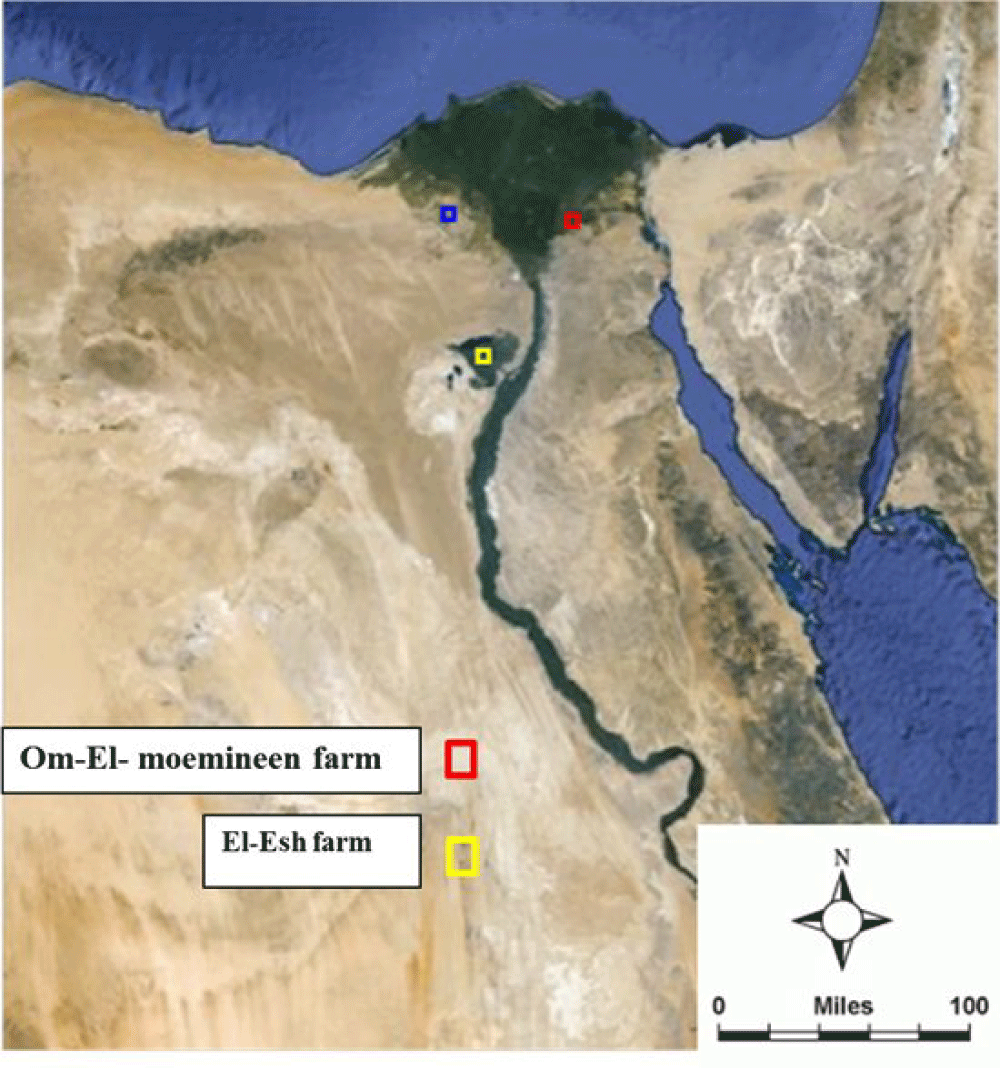
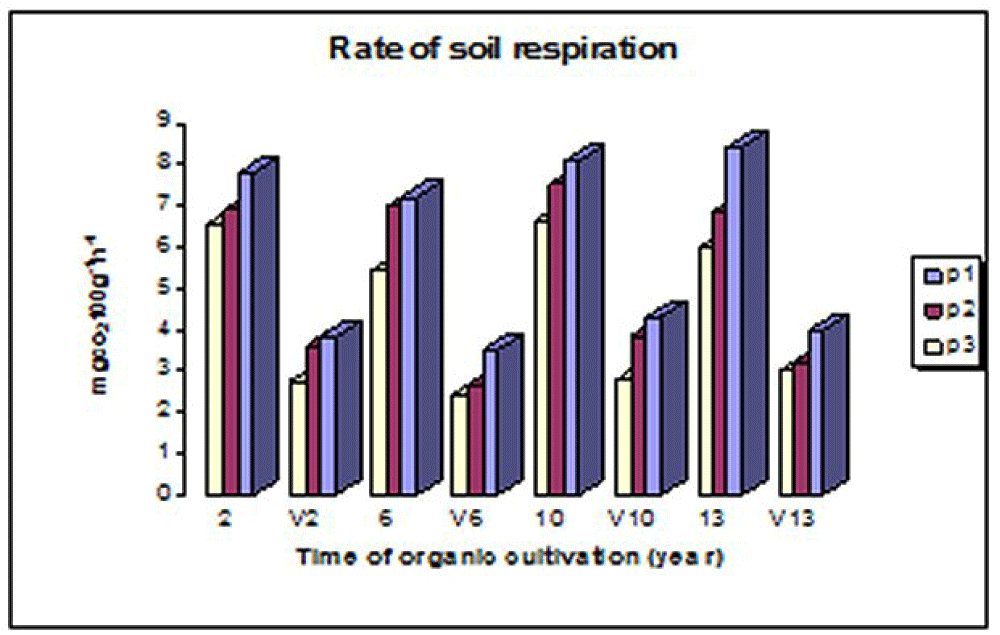
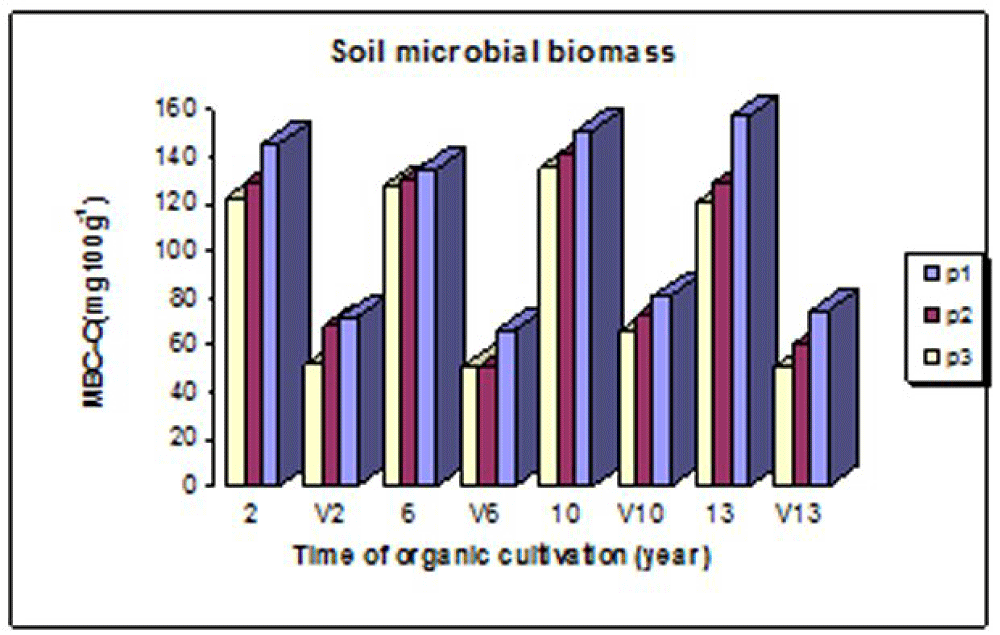
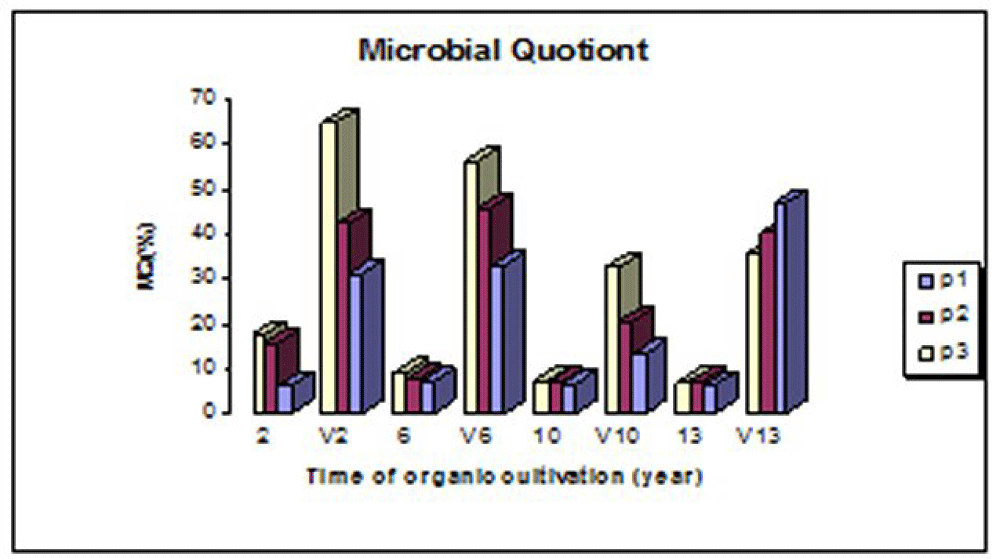
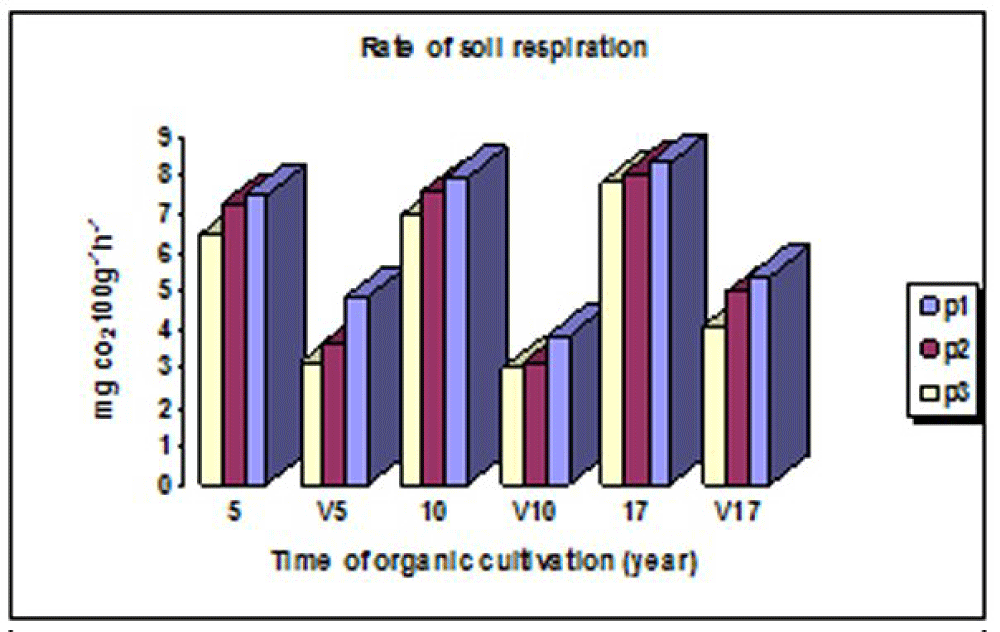
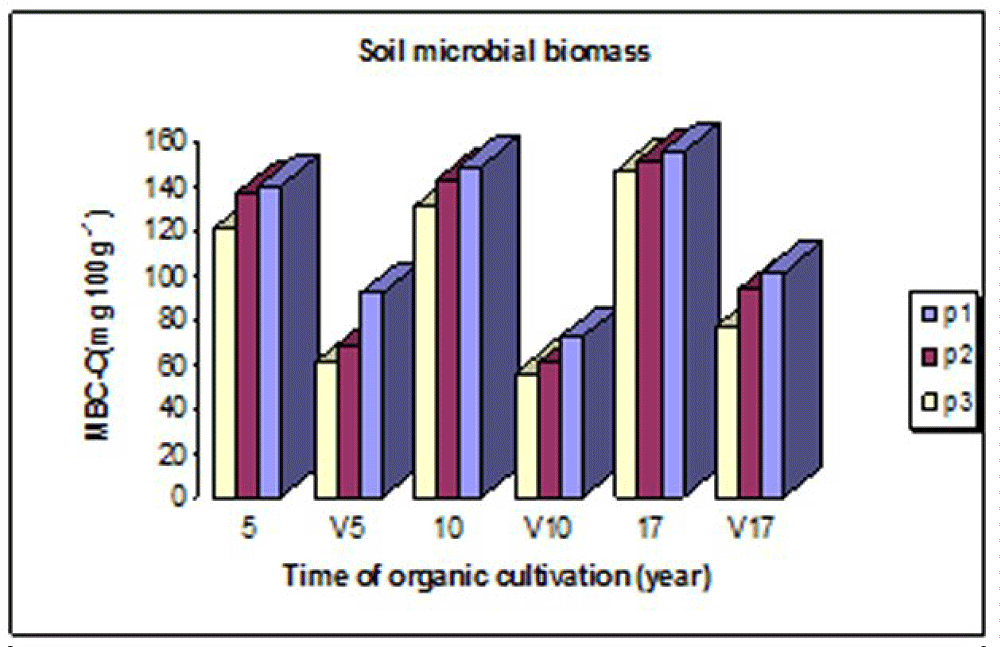
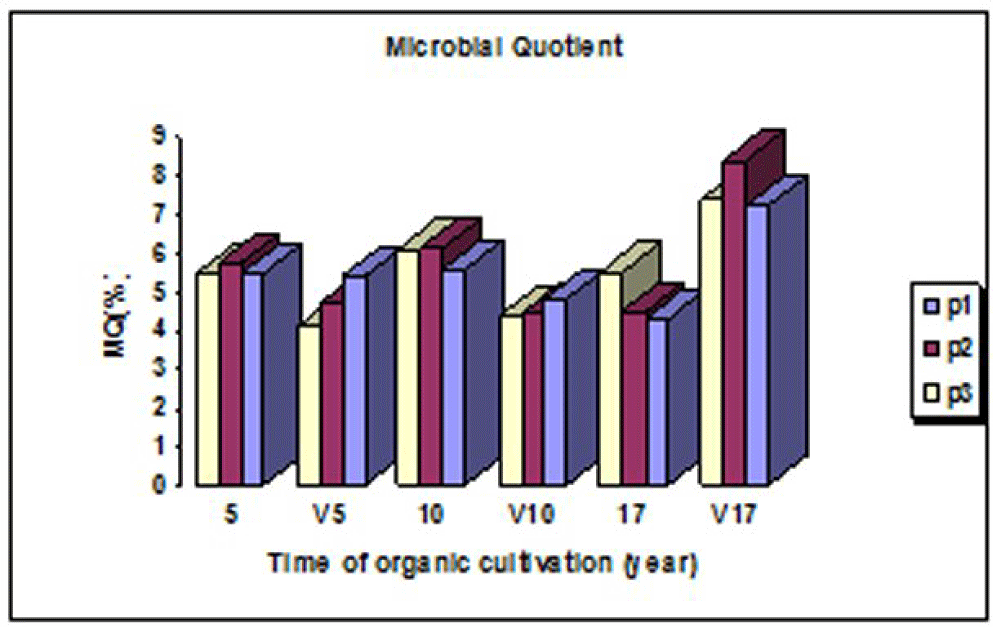


 Save to Mendeley
Save to Mendeley
